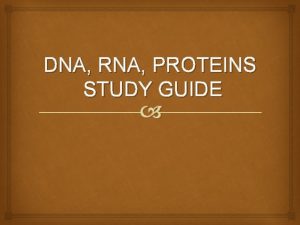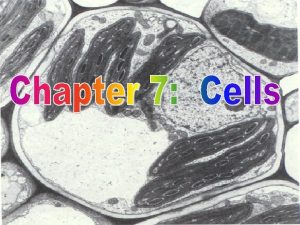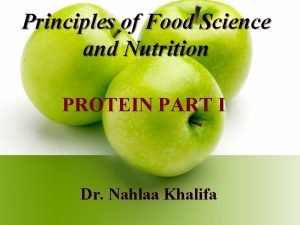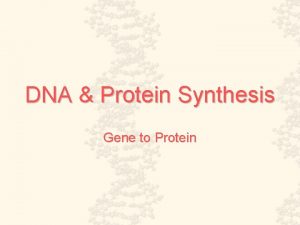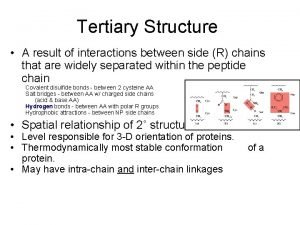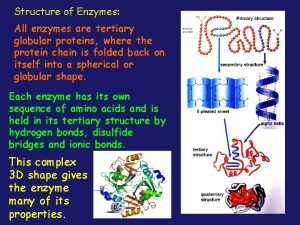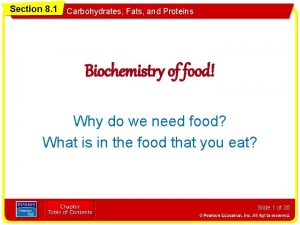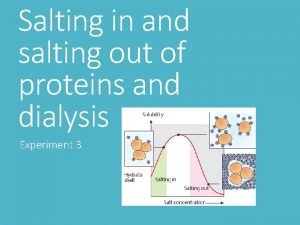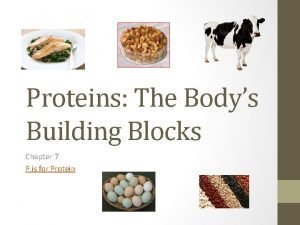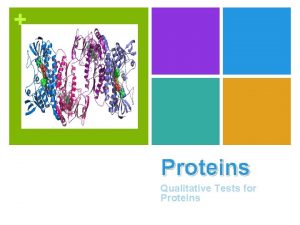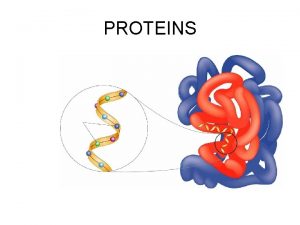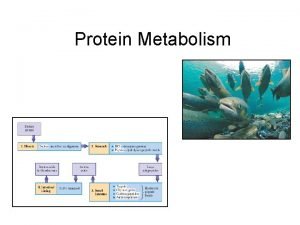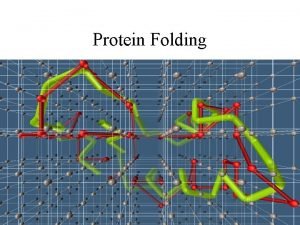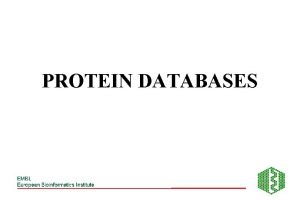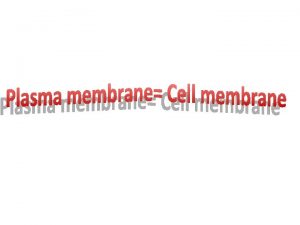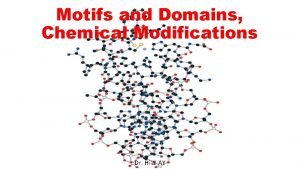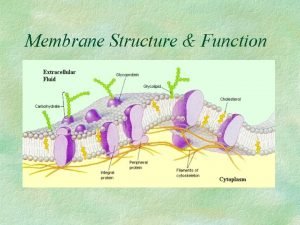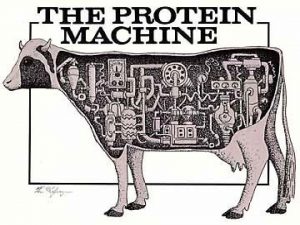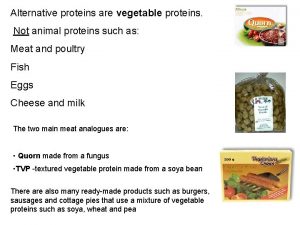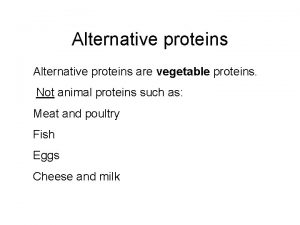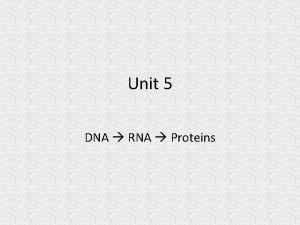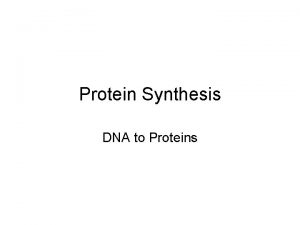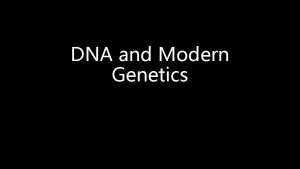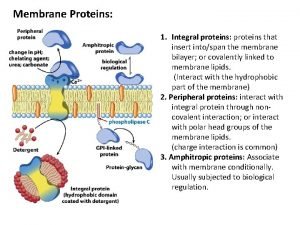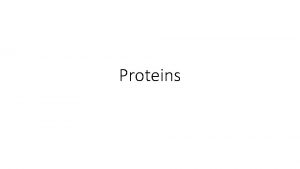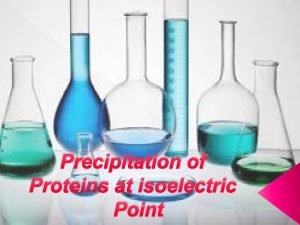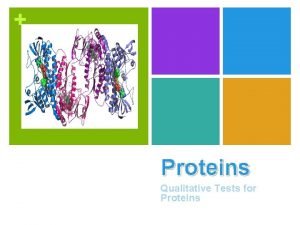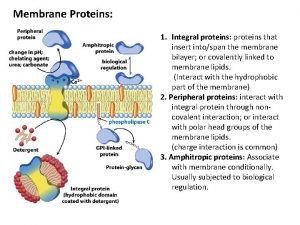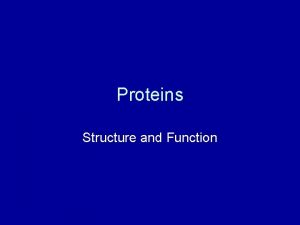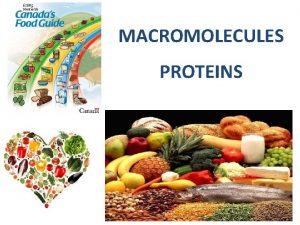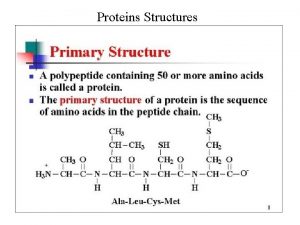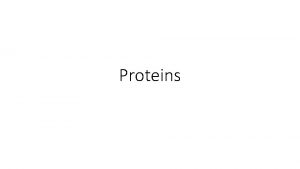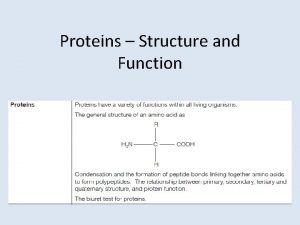How are animal proteins made from DNA In





























- Slides: 29

How are animal proteins made from DNA?

In a process called “Protein Synthesis”

The Big Picture!!

What are the differences between DNA and m. RNA? • DNA • Double stranded • Deoxyribose sugar • m. RNA • Single stranded • Ribose sugar • Has uracil nucleotide in place of Thymine

There are two processes to protein synthesis!! • Transcription DNA to m. RNA (Messenger RNA). Takes place in the nucleus. • Translation m. RNA to t. RNA (Transfer RNA). Takes place in the ribosomes of the cytoplasm.

Let’s see these two processes up close in steps!!

What is “transcription? ” • A part of the DNA double helix within the nucleus is unzipped, cut by enzymes, and then copied onto a new single strand, called m. RNA. This process is called “transcription. ” • Once the DNA is transcribed, the single strand moves from the nucleus to a ribosome in the cytoplasm of the cell. Thus the name, “messenger RNA. ”

Nitrogen Bases • You already learned that the nitrogen bases in DNA are: Adenine – Thymine Guanine – Cytosine • The Nitrogen bases in RNA are similar, but rather than Thymine, RNA contains a similar base called Uracil. Thus, the base pairs are: Adenine - Uracil Guanine - Cytosine


• One strand of the DNA helix is used as a template to make “m. RNA” (copy of the DNA section) during transcription.

Let’s copy some DNA to m. RNA!! REMEMBER: in m. RNA, Uracil replaces Thymine

Answer!!! • DNA strand: ATCGGCATCATT • m. RNA strand: UAGCCGUAGUAA • DNA strand: ATGAAGGCGAAA • m. RNA strand: UACUUCCGCUUU

Sample Question • A. • B. • C. • • UUGGCCGAUUGG TTGGCCGATTGC AACCGGCTAACC Which strand is ____ DNA STRAND 1 ____ DNA STRAND 2 ____ m. RNA

Answer! • A. • B. • C. • • UUGGCCGAUUGG TTGGCCGATTGC AACCGGCTAACC Which strand is __b or c__ DNA STRAND 1 __b or c__ DNA STRAND 2 __a__ m. RNA

Now the message can be translated!! • A single strand of m. RNA was just transcribed from DNA within the nucleus and now the code will be translated to make the specific protein within a ribosome in the cytoplasm!! • DNA strand • m. RNA strand TACATTTAGCGG AUGUAAAUCGCC

What is the structure of the m. RNA code? • Three m. RNA nucleotides form a triplet code called a “codon. ” Each codon sequence will then code for a t. RNA with an anticodon with opposite nitrogen bases.

t. RNA • Notice UGA anticodon at bottom of the t. RNA • Notice Amino Acid at the top of the t. RNA

Genetic code • There are 64 combinations using the four m. RNA nucleotides AUGC to code for 20 amino acids.

Step 2 of Protein Synthesis • m. RNA is used to pair up with t. RNA to code for amino acids that form a chain to make a specific protein in a process called “translation. ”

What is “translation”? • A ribosome binds m. RNA to t. RNA, which is attached to specific amino acids as anticodons. Each anticodon of t. RNA attaches to a codon on m. RNA. An amino acid is attached to the top of a t. RNA. The amino acids bond together, forming a polypeptide chain that make a specific protein.

Where does translation take place? • In ribosomes in the cell’s cytoplasm

t. RNA anticodon (UAC) binds m. RNA at the START codon (AUG) to begin the translation message

Each t. RNA caries a specific amino acid. The amino acids bind together to make a polypeptide chain to make specific proteins.

• At the end (stop codon), a release enzyme binds to a stop codon in the sequence. This stops translation, releasing the completed chain of protein.


Complete the following code!! • • • DNA m. RNA t. RNA A. A AT _ CGG _ _ _ TGG TAC _ _ _ CGT ACC ______ _ _C G _ _ _ _ ____=Protein – (Use the table to find the correct amino acid)

Complete the following code!! • • • DNA m. RNA t. RNA A. A ATG CGG GCA TGG TAC GCC CGT ACC AUG CGG GCA UGG UAC GCC CGU ACC TRY ALA ARG THR = Protein – (Use the table to find the correct amino acid)

How is this new animal protein used? • It may be used for: • Structure muscle, bone, hair • Cell membranes • Chemicals special enzymes

Big Picture in Action
 Antigentest åre
Antigentest åre Dna rna and proteins study guide answers
Dna rna and proteins study guide answers Which organelle is the site where proteins are made
Which organelle is the site where proteins are made Elementary composition of proteins
Elementary composition of proteins Replication
Replication Bioflix activity dna replication lagging strand synthesis
Bioflix activity dna replication lagging strand synthesis Coding dna and non coding dna
Coding dna and non coding dna What are the enzymes involved in dna replication
What are the enzymes involved in dna replication Dna rna protein synthesis homework #2 dna replication
Dna rna protein synthesis homework #2 dna replication The spools from which the dna unwinds is made of what
The spools from which the dna unwinds is made of what Animal vs plant cell venn diagram
Animal vs plant cell venn diagram Plant cell and animal cell venn diagram
Plant cell and animal cell venn diagram Animal rights versus animal welfare
Animal rights versus animal welfare Carrier vs channel proteins
Carrier vs channel proteins Globular vs fibrous proteins
Globular vs fibrous proteins All enzymes are globular proteins
All enzymes are globular proteins Section 8-1 carbohydrates fats and proteins answer key
Section 8-1 carbohydrates fats and proteins answer key Salting in salting out
Salting in salting out Body's building blocks
Body's building blocks Example of denatured protein
Example of denatured protein What are derived proteins
What are derived proteins Monomers protein
Monomers protein Function of protein
Function of protein Protein metabolism notes
Protein metabolism notes How do proteins fold
How do proteins fold Protein databse
Protein databse Metodo di lowry
Metodo di lowry Glycoprotein vs glycolipid
Glycoprotein vs glycolipid Protein domains and motifs
Protein domains and motifs Functions of membrane proteins
Functions of membrane proteins

